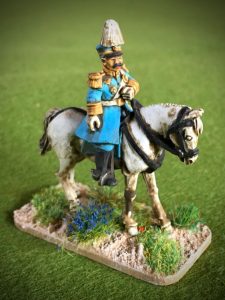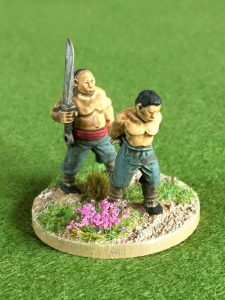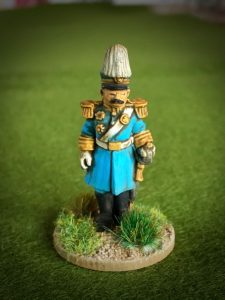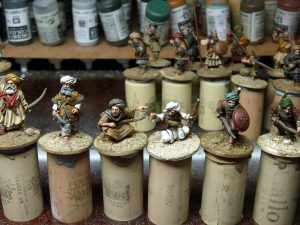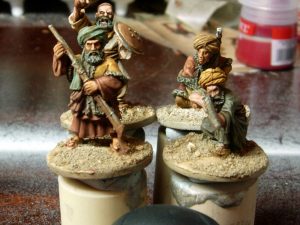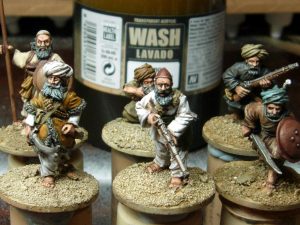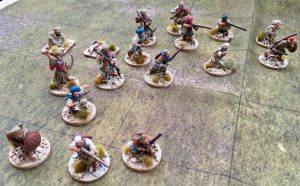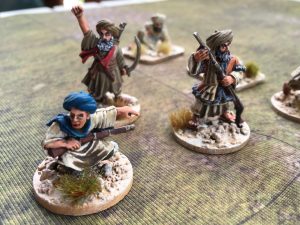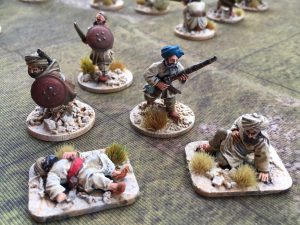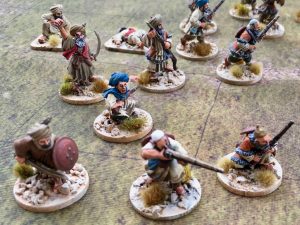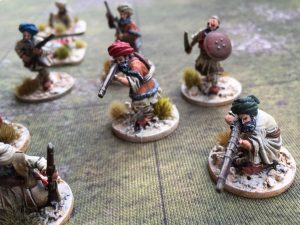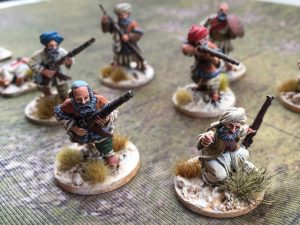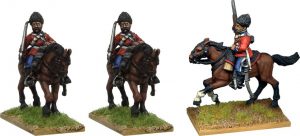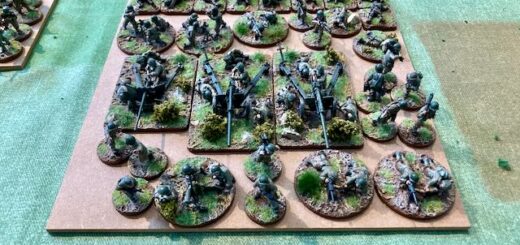Luglio 2018
Sto dipingendo venti afgani Foundry. Pezzi bellissimi dei fratelli Perry di qualche anno fa. Ecco il tipo di colori che voglio usare, foto prese sulla rete.
Questi sono i miei pezzi dipinti
Altri pezzi imbasettati sono una unità di cavalleria regolare afgana, circa 1880.
Ecco una tavola che descrive le loro uniformi (figura centrale in alto) e la descrizione delle uniformi.
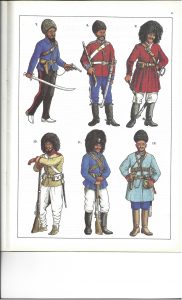 Dal web:
Dal web:
Several detailed descriptions of Afghan regular cavalry confirm the general accuracy of the picture from which this figure is taken, published in the Illustrated London News of 18 October 1879. Joshua Duke, for instance, says that ‘a slovenly scarlet coat, loose blue trousers, tucked carelessly into dirty boots without spurs, white pouch-belts and accoutrements, a sword, carbine, and last, but not least, a Kabul short-handled riding-whip, formed their uniform. Each trooper wore a hideous slate-coloured helmet of an ugly shape.’ Colquhoun, describing the same contingent, says they were ‘dressed in old British red cloth uniforms with white belts, more or less clay-piped, rather baggy blue cotton trousers, with long boots innocent of blacking. The only purely native article about them was their headdress, which, however, was also a copy of the present English helmet, but being made rather shapeless, of a soft grey felt, it was not becoming.’ He adds that the whip was stuck into the right boot when not required, and also that a large number of men carried eye shades (‘great pieces of cardboard apparently covered with cloth, and fitted to the helmet above the peak, shading either the side or the front of the face from the sun, as required’), which were slung round the neck when not in use. Both of these accounts, it will be noted, refer to helmets, but pictures of such cavalrymen in the Illustrated London News invariably show them wearing the Herati hat depicted, described by A. Le Messurier(23) in this context as ‘dyed sheepskin, with the wool outside, covering a large felt skull-cap’. The ILN also shows spurs being worn, despite Duke’s specific statement to the contrary.
In severe weather Afghan regular cavalry wore sheepskin poshteens just like their Anglo-Indian counterparts, who, as can be seen, they resembled rather closely (H.C. Marsh actually describes a troop he saw at Kandahar in 1872 as ‘got up in imitation of our native cavalry’). This similarity is most clearly demonstrated by a description of a cavalry skirmish at Ghul Kotul in January 1879: ‘At a distance it was impossible to distinguish [the Afghans] from our own native cavalry, and when close they could only be known by a peculiar fur cap, like a small bearskin with a red scollop of cloth in front over the forehead. Their poshteens were the same as those worn by the native cavalry, the carbine was slung, they wore swords and long boots, and the horse accoutrements were in the same style as our own cavalry’.(24)
We know from various such references that saddles and harness were British, that a ‘cloak’ (doubtless a native choga) was rolled up in front of the saddle, with a couple of saddle-bags and a rolled-up blanket or similar behind. Grodekoff provides some additional equipment details, telling us that ‘the metal portion of the cartridge pouches and belts bear English marks and inscriptions, such as “First Bengal Regiment of Light Cavalry”, “God save the Queen”, and so forth.’ He adds that in addition to a sabre and carbine each dafadar carried a six-foot lance with a small pennon.
Alternative cavalry uniforms mentioned in the sources include Lord Roberts’ reference to a detachment of what appears to have been the Risala-i-Shahi guard regiment in July 1879, who were ‘dressed something like British Dragoons’ except that they wore ‘discarded helmets of the old Bengal Horse Artillery’;(25) and Bellew’s reference to a regiment seen at Kandahar in 1872 which wore ‘blue hussar-jackets, top-boots, and scarlet busbies’ (a confirmation in passing that the Herati hat was sometimes coloured). Grodekoff similarly came across regulars wearing ‘Hungarian hussar jackets’ at Maimana in 1878. Yate in 1886 briefly describes the dress of several cavalry regiments, including one dressed and armed exactly as depicted while others wore brown jackets, blue trousers, long boots and a cap like that of plate 4, and in addition to a carbine carried a curved sword described in The Graphic of 30 May 1885 as a copy of the Cossack shashka, having no guard so that all but an inch of the hilt fitted ‘well into the scabbard’, which was slung from rings fitted to the convex side of the curve. A correspondent to the Illustrated London News confirms that cavalry uniforms in 1885, as in 1878–80, were mostly either red or blue.
Dal catalogo Foundry:
Ho poi imbasettato i miei Cinesi Back Of Beyond, tagliatori di teste e Signore della Guerra.
